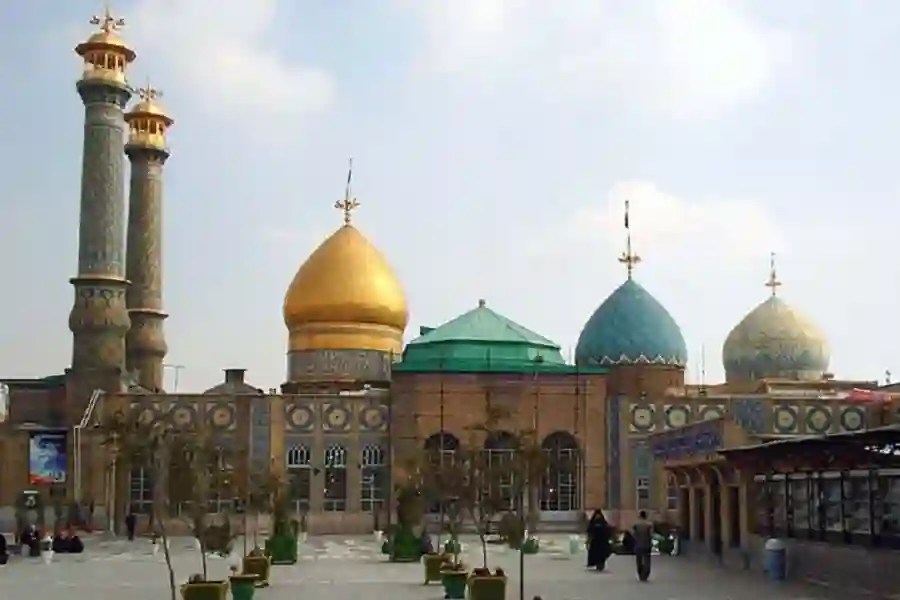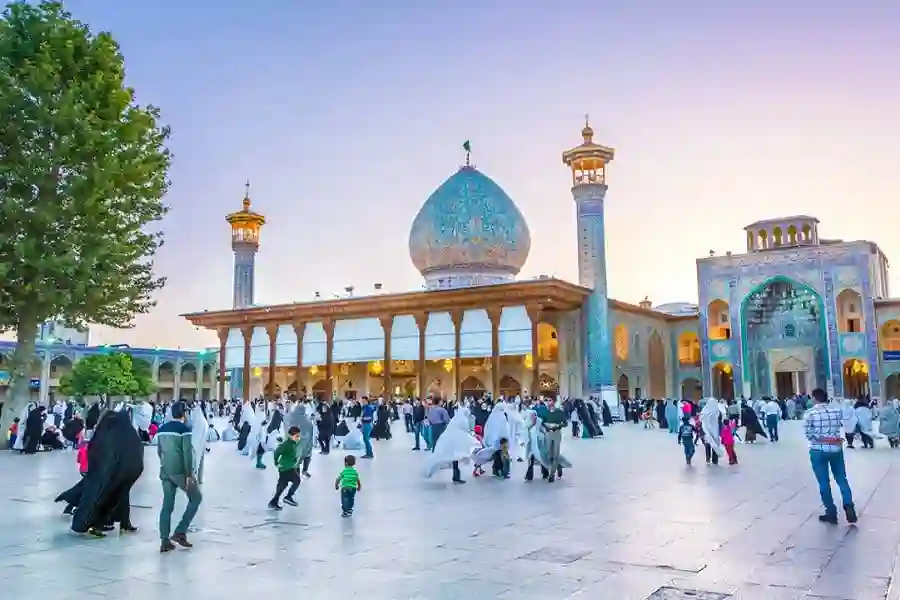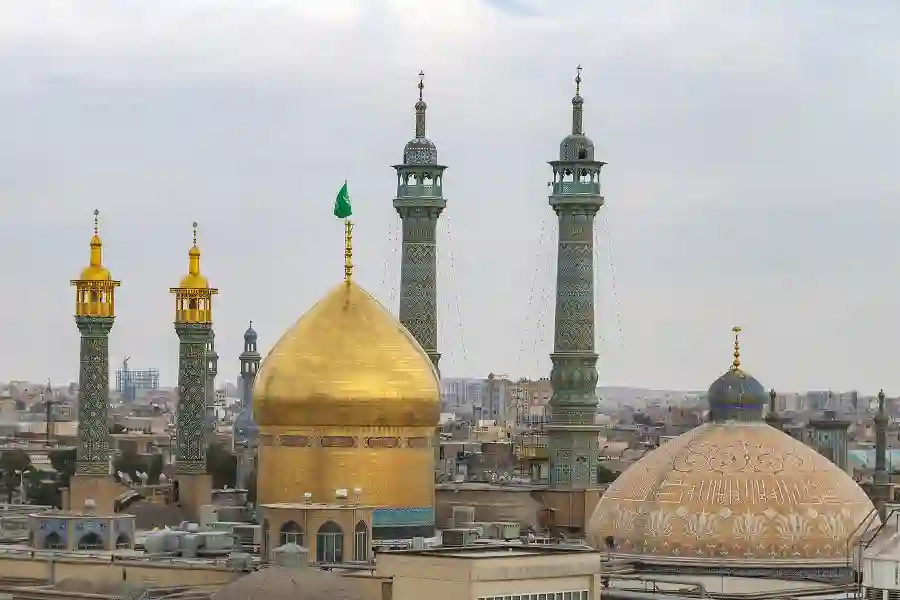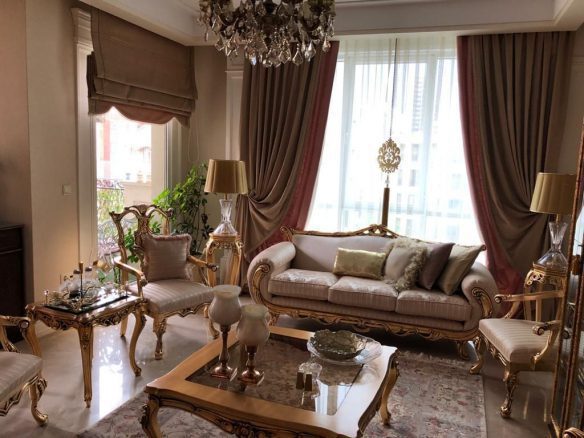Iran religious tourism offers a profound and spiritual journey through one of the world’s oldest centers of faith and devotion. As a country deeply rooted in both ancient Zoroastrian beliefs and Islamic heritage—particularly Shia Islam—Iran is home to some of the most significant religious landmarks in the Middle East. From the holy city of Mashhad to the tranquil fire temples of Yazd, Iran religious tourism allows travelers to explore sacred spaces, participate in meaningful rituals, and gain insight into centuries of spiritual tradition and cultural richness.
Why Iran Is a Key Destination for Religious Tourism
Iran stands as one of the most significant religious destinations in the Middle East, offering a deep spiritual experience rooted in thousands of years of history. From ancient Zoroastrian rituals to the flourishing of Shia Islam, Iran’s religious identity has evolved into a complex and rich tapestry that continues to inspire millions of pilgrims and cultural travelers every year. With sacred cities, revered shrines, and centuries-old mosques, Iran religious tourism invites visitors to witness a spiritual legacy that is both deeply historical and vibrantly alive.
What makes Iran particularly appealing is the authentic connection between faith and daily life. Religious expression is not confined to historical monuments—it is found in every corner of Iranian culture, from family traditions and mourning rituals to architectural marvels and public festivals. Whether you’re exploring the serene courtyards of a shrine in Qom or the awe-inspiring golden dome of Mashhad’s Imam Reza complex, Iran religious tourism offers a journey that goes far beyond sightseeing—it’s about immersing oneself in sacred meaning.
The diversity of faiths presents in Iran—from Islam to Christianity, Judaism, and Zoroastrianism—makes it a unique crossroads for spiritual exploration. Visitors interested in Iran tourism will discover that religious heritage is central to understanding the broader cultural identity of the country. Iran’s welcoming approach to religious travelers and the continued preservation of holy sites makes it a key destination for anyone seeking to connect with the spiritual heart of the region.

Important Islamic Pilgrimage Sites in Iran
Iran is home to some of the most revered Islamic pilgrimage sites in the world, especially for followers of Shia Islam. These sacred locations draw millions of visitors annually, offering opportunities for worship, reflection, and connection to religious history. Whether you’re a devout pilgrim or a cultural traveler curious about spiritual practices, the following shrines and holy cities represent the core of Iran religious tourism and should not be missed.
Imam Reza Shrine in Mashhad
The Imam Reza Shrine, located in Mashhad, is the largest and most significant religious complex in Iran. As the burial site of the eighth Shia Imam, Ali ibn Musa al-Reza, it holds profound religious importance. The shrine is not only a spiritual destination but also a breathtaking architectural marvel, with glittering mosaics, expansive courtyards, and a radiant golden dome that dominates the city skyline.
Visitors come from around the world to pay respects, seek blessings, and experience the unique serenity of the site. The surrounding infrastructure, including religious schools, museums, and libraries, makes this shrine a hub for education and spiritual enrichment. As a focal point of Iran religious tourism, Mashhad demonstrates the deep devotion and cultural reverence that define the Iranian approach to faith.

Fatima Masumeh Shrine in Qom
Qom is the second most important religious city in Iran, known primarily for the Fatima Masumeh Shrine. Fatima Masumeh was the sister of Imam Reza, and her resting place has become a site of pilgrimage and reverence for Shia Muslims. The shrine complex is renowned for its artistic beauty and spiritual ambiance, drawing visitors seeking healing, knowledge, and prayer.
Qom also serves as a major center for Islamic scholarship, attracting seminary students and religious scholars from across the Shia world. The city’s combination of spiritual depth and intellectual tradition makes it a cornerstone of Iran religious tourism, providing pilgrims with a holistic religious experience.
Shah Cheragh in Shiraz
Shah Cheragh, meaning “King of Light,” is a dazzling shrine located in Shiraz. It houses the tomb of Ahmad ibn Musa, the brother of Imam Reza, and is famous for its extraordinary interior design. Walls covered in intricate mirror work, colorful tiles, and reflective glass create an ethereal atmosphere that captures the attention of anyone who enters.
Shiraz, already known for its poetic and cultural legacy, offers visitors a unique blend of beauty and faith through Shah Cheragh. As a highlight of Iran religious tourism, this shrine exemplifies how art and devotion intertwine, creating a sacred space that inspires awe regardless of one’s religious background.
These three sites—Mashhad, Qom, and Shiraz—not only represent important religious landmarks but also embody the spirit of hospitality and spiritual openness that characterizes Iran religious tourism. They serve as gateways to deeper understanding, emotional reflection, and meaningful cultural exchange.

Zoroastrianism and Ancient Religious Heritage in Iran
Before the rise of Islam, Zoroastrianism was the dominant faith in Iran for centuries. As one of the world’s oldest monotheistic religions, it had a profound influence on Persian culture, governance, and spiritual identity. The teachings of Zoroaster (Zarathustra), centered around the duality of good and evil, truth and falsehood, and the importance of individual choice, are still studied and respected today. Zoroastrian elements like fire temples and sky burials continue to fascinate scholars and spiritual travelers alike.
Yazd, often regarded as the spiritual center of Zoroastrianism in Iran, offers a glimpse into this ancient faith. Visitors can explore the Atash Behram fire temple, where a sacred flame has burned continuously for over 1,500 years, and visit the Towers of Silence—circular stone platforms once used for sky burials. These sacred sites are a testament to the resilience of Zoroastrian traditions and offer a rare opportunity to engage with a religion that shaped early Persian identity.
Incorporating Zoroastrian landmarks into your Iran religious tourism itinerary provides a holistic understanding of the nation’s spiritual roots. These experiences create a bridge between ancient and modern beliefs, highlighting the diverse religious heritage that continues to define Iran’s cultural landscape.
Religious Festivals and Ceremonies in Iran
Iran is home to a wide range of religious festivals and ceremonies that bring people together in collective acts of remembrance, devotion, and celebration. These events are often public and deeply emotional, offering unique opportunities for visitors to witness living spirituality. Below are some of the most important festivals you may encounter as part of your Iran religious tourism experience:
- Ashura and Muharram: The mourning of Imam Hussein, the grandson of Prophet Muhammad, is the most significant event in the Shia calendar. Streets fill with processions, recitations, and theatrical reenactments of the Battle of Karbala. The passion and scale of these ceremonies are unlike anything seen elsewhere
- Nowruz (Persian New Year): Though rooted in Zoroastrianism, Nowruz is celebrated by all Iranians regardless of religion. It marks the spring equinox and symbolizes renewal and rebirth. Altars called “Haft-Seen” are set up in homes, and families gather to clean, visit elders, and start the year with hope
- Ramadan and Eid al-Fitr: During the holy month of Ramadan, Iranians fast during the day and gather for evening meals with friends and family. Mosques are lively with prayer, and the end of Ramadan is celebrated with Eid al-Fitr, a festive day of gratitude and joy
- Sadeh Festival: Celebrated by Zoroastrians, Sadeh is a mid-winter fire festival symbolizing the triumph of light over darkness. Bonfires are lit in Zoroastrian communities, especially in Yazd and Kerman, and prayers are offered to Ahura Mazda.
These ceremonies offer deep cultural insight and emotional connection. Participating respectfully in these traditions can elevate your Iran religious tourism journey from passive observation to meaningful engagement.

Architecture and Symbolism in Iran’s Religious Monuments
Religious architecture in Iran is a powerful blend of artistic mastery and spiritual symbolism. Mosques, shrines, and fire temples are not merely places of worship—they are visual narratives of divine connection. Persian architects have long infused sacred spaces with intricate tilework, geometric patterns, and calligraphy that communicate religious values through design. Light plays a central role, often filtered through stained glass or reflected by mirrors to create a mystical ambiance.
Take, for example, the Nasir al-Mulk Mosque in Shiraz, known as the Pink Mosque. When morning sunlight enters through its stained glass, the entire prayer hall transforms into a kaleidoscope of color. This architectural wonder reflects not only beauty but also the spiritual philosophy of enlightenment and inner peace. In Yazd’s fire temples, the simplicity and symmetry of Zoroastrian design convey a different, more elemental approach to sacred space.
Symbolism in these monuments often extends beyond visual elements. Domes represent the heavens, minarets reach toward divine presence, and water features symbolize purity and life. Exploring these religious structures as part of your Iran religious tourism experience helps you grasp the profound connection between faith and form—how architecture itself becomes a medium of devotion.
Cultural Etiquette for Religious Visitors in Iran
Respecting local customs and religious sensitivities is essential when visiting sacred sites in Iran. While the country is known for its hospitality, travelers should observe certain guidelines to ensure their presence is welcomed and appropriate. Modest dress is important for both men and women, especially in religious spaces. Women are expected to cover their hair and wear loose clothing, and men should avoid shorts and sleeveless tops.
When entering mosques or shrines, it’s customary to remove shoes, lower your voice, and avoid taking photographs unless explicitly allowed. Engaging with locals respectfully—asking questions, listening to stories, and observing rituals quietly—can deeply enhance your experience. Practicing these etiquettes not only demonstrates cultural awareness but also shows appreciation for the sacred spaces you’re entering. This respect forms the foundation of any meaningful Iran religious tourism journey.

How Iran Religious Tourism Supports Interfaith Understanding
In a world where religious tensions often make headlines, Iran religious tourism provides a powerful counter-narrative rooted in shared values and human connection. Visitors from diverse religious backgrounds come to Iran and discover that spirituality, regardless of form, speaks a universal language of peace, respect, and inner growth. By engaging with Iranian religious sites, travelers encounter traditions that may differ from their own but resonate on a deeply human level.
Interactions with local worshippers, scholars, and guides often open doors to deeper conversations about belief, morality, and community. These moments foster empathy and understanding, encouraging mutual respect between people of different faiths. Whether it’s witnessing a Shia mourning procession or lighting a candle in a Zoroastrian temple, the act of presence itself becomes a bridge between worlds.
Iran religious tourism thus goes beyond historical exploration—it becomes a catalyst for interfaith dialogue. As travelers bear witness to Iran’s spiritual diversity and engage with its communities, they contribute to a more inclusive and understanding global narrative. In this way, tourism becomes a quiet but powerful form of diplomacy, built on shared experience and mutual reverence.
Experience the Spiritual Side of Iran with TehranOffers
Iran is not just a country of historical marvels and cultural richness—it is a spiritual landscape where faith breathes through architecture, poetry, tradition, and daily life. From sacred Islamic shrines to ancient Zoroastrian temples, Iran religious tourism offers a deeply transformative experience for those seeking connection, meaning, and cultural understanding. Whether you are a devout pilgrim or a curious traveler, Iran welcomes you with open arms and open hearts.
At TehranOffers, we specialize in guiding travelers through their spiritual journey across Iran. We connect you with local experts, plan meaningful religious tours, and ensure your stay in Tehran is both comfortable and authentic. With a range of luxury short-term rentals in prime locations across the capital, we provide the perfect base for your exploration of Iran’s sacred sites. Trust TehranOffers to be your companion on this enlightening path.














Join The Discussion